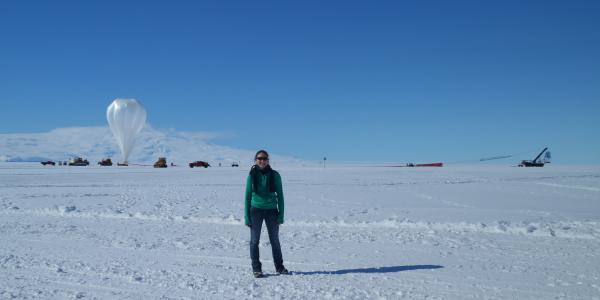Johanna Nagy recently joined the Department of Physics as an assistant professor. She was also named a Fellow of the McDonnell Center for the Space Sciences.

in new lab equipment.
Nagy's research focuses on experimental cosmology, with the goal of improving our understanding of the contents and evolution of the Universe. Her lab focuses on building instruments to enable more precise measurements of the Cosmic Microwave Background (CMB), from design and prototyping to construction, deployment, and data analysis. Using arrays of thousands of cryogenic detectors, these instruments map the polarization of the microwave sky at frequencies from 20-300 GHz. Nagy's current projects include SPIDER and CMB-S4, which together probe topics ranging from the physics of inflation to the nature of dark energy and the properties of fundamental particles.
SPIDER is a balloon-borne telescope that is searching for a signal from inflation, a postulated period of rapid expansion when the Universe was less than a second old. In January of 2015, SPIDER launched from Antarctica for its first flight, which lasted 16 days. In addition to constraining inflationary signals, SPIDER also set a new upper limit on CMB circular polarization. Preparations are currently underway for a second Antarctic flight, which will provide data at higher frequencies.
CMB-S4 is a planned ground-based experiment that will consist of a combination of large and small aperture telescopes located in Chile and at the South Pole. With wide and deep surveys in 8 frequency bands, it will provide polarized sky maps with unprecedented sensitivity. This will enable more precise tests of inflation, measurements of neutrino number and mass, constraints on new fundamental particles, and insights into dark energy.
Before joining Washington University, Nagy was a Dunlap Fellow with the Dunlap Institute for Astronomy & Astrophysics at the University of Toronto. At Washington University, she is particularly excited for the opportunity to work with the many astroparticle ballooning groups and the Center for Quantum Sensors in addition to the McDonnell Center for the Space Sciences. When she’s not in the lab, she enjoys exploring St. Louis’ parks with her dog and snuggling her two cats.


